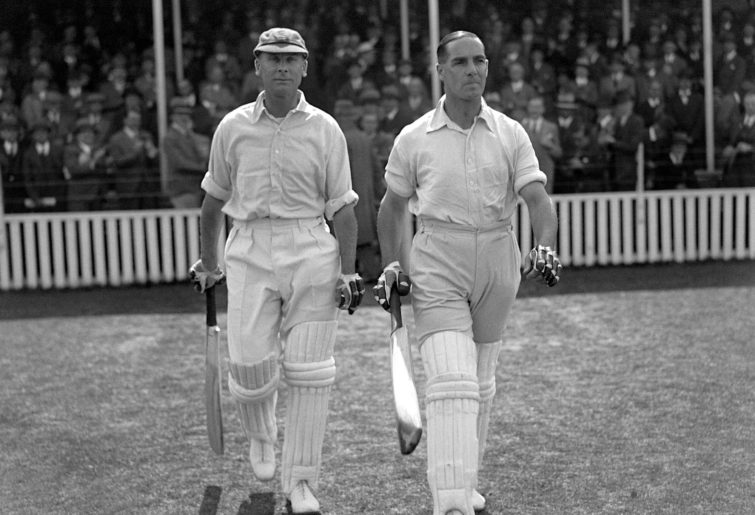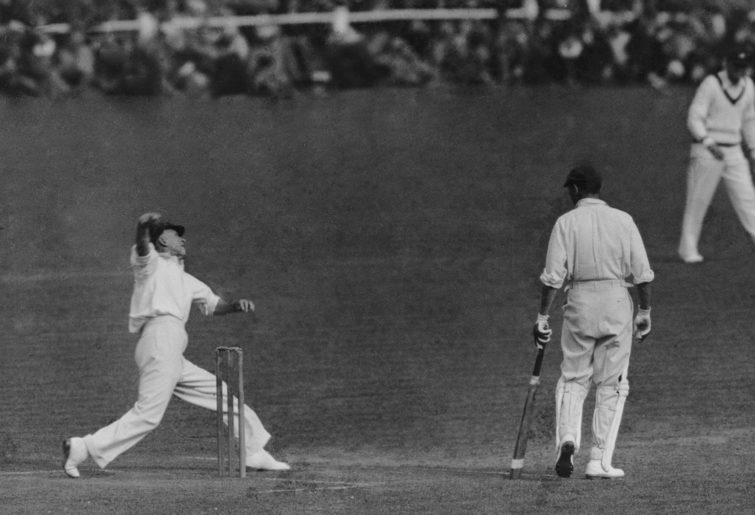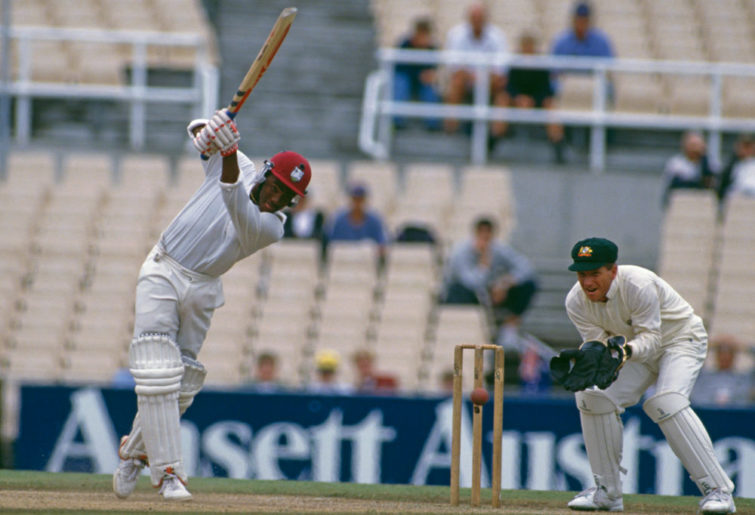Jack Hobbs, Don Bradman, Garry Sobers, Viv Richards and Shane Warne. Has anyone noticed that Wisden’s five best cricketers of the 20th century are specifically selected from five different eras?
Jack Hobbs played from 1908 until 1929. In those first 28 and a bit years of the 20th century, Hobbs stood alone statistically above all other cricketers from that era.
The same applies to Bradman in the 1930s. Garry Sobers came along in the mid-1950s, and played until the early 1970s. From Bradman’s retirement until Sobers’, nobody could match the West Indian as a cricketer, although Graeme Pollock was not far behind him as a batsman.
Viv Richards’ Test debut was a mere year or so after Sobers retired, and he played until 1991. During the 1970s, only two other batsmen averaged 50 or more in Test cricket, namely Greg Chappell and Sunil Gavaskar.
In white-ball cricket, “the Master Blaster” was in a class of his own. One-day cricket took off in a big way after Kerry Packer’s World Series revolution in the latter part of the ’70s. There were many great bowlers during Richards’ career, but none stood out from the pack in the way Richards did as a batsman.
Viv is still the king of one-day cricket. I don’t believe Virat Kohli would have averaged 59 with a 93 strike rate had he played during the 1980s, any more than Bradman would have averaged 99 in Tests during that era.
No player from Richards’ era can better his ODI average of 47 and a strike rate of 91. Only two others even came close. Namely, his predecessor as West Indies captain, Clive Lloyd, who averaged 39 at a strike rate of 82, and Zaheer Abbas, who averaged 47 at 83.
Neither played anywhere near the number of games Richards did, although Zaheer’s seven centuries, all scored between December 1981 and June 1983, were an ODI record at the time of his retirement.
Richards was, in any case, the number one Test batsman for the majority of his 17-year career.

(S&G/PA Images via Getty Images)
Warne’s first Test, in January 1992, was a mere four months after Richards had played his last. It is Warne who surely had the most competition to represent his own era.
Either Tendulkar or Lara may have appealed to Wisden, although I agree that Warne probably had a larger impact on the game – but only marginally.
The dark horse from Warne’s era could be Wasim Akram, and he is going to become quite relevant once I reveal my true purpose in writing this.
Wisden’s other four choices are more clear-cut. Pollock may have been the equal of Sobers as a batsman, but Sobers could also bowl a number of different modes. Fred Trueman was undoubtedly the greatest bowler from Sobers’ time, but he was probably also a genuine rabbit with the bat.
As stated, Sobers was also a very handy bowling option. Though they had Wes Hall throughout the 1960s, the West Indies’ attack lacked depth. As such, the great all-rounder often shouldered a heavy workload with the ball.
Before I get to my main purpose, allow me to reiterate what appears to be Wisden’s wisdom in their choices.
Viv Richards, for example, wasn’t necessarily chosen over Walter Hammond because he was the better batsman of the two, but because Richards was the standout cricketer from his own era. Hammond always lived in Bradman’s shadow.
Jack Hobbs wasn’t chosen because he was a better opener than the likes of Len Hutton, Sunil Gavaskar, or Gordon Greenidge – but because he too was the best cricketer of his era.
What I aim to now do is, using these five cricketers as a base, select a complete team, predominantly of the 20th century.
In order to do this, I will adhere to a very strict rule: I must choose one more cricketer from each of those five eras. The 11th player will come from the 21st century, and the 12th man from the 19th century.
Each of my own seven choices must also, in their own way, be stand out players from their own era. Eras may overlap, but I will endeavour to avoid it.
The second choice from one of the eras must have played at least half of his career in that same era. Obviously, my team also needs to comprise six batsmen, a wicketkeeper, and four bowlers plus the 12th man.
I will start with Hobbs’ era. There are really only two choices, Herbert Sutcliffe and Victor Trumper. Both are slightly problematic with the rules I have set. Victor Trumper debuted in 1899, but played until 1912, so he easily qualifies as early 20th century.
The problem is that Hobbs himself only debuted four years before the end of Trumper’s career. We also can’t claim that the First World War cost Trumper a large chunk of his career, as he died in 1915 – not in battle, but of Bright’s disease in Sydney.

Jack Hobbs (left), and Herbert Sutcliffe. (Photo by PA Images via Getty Images)
The problem with Sutcliffe is that time-wise, he played the majority of his career in Bradman’s era. He debuted in 1924, four years before Bradman, and played until 1935 – more than a decade before Bradman retired.
Choosing Sutcliffe from Bradman’s era is also not an option, as in my opinion, Hammond was a superior batsman, and in any case, I am choosing Bill O’Reilly as the standout bowler from Bradman’s time.
Clarrie Grimmett could also be considered, as the first bowler to pass 200 Test wickets. It would be false to argue Grimmett played a large portion of his career before Bradman debuted.
However, the leggie’s career was certainly curtailed by Bradman’s vindictiveness. Grimmett’s axing immediately followed a 44-wicket haul in a five-Test series in South Africa – and came immediately after Bradman was made Australian captain.

Clarrie Grimmett. (Photo by Central Press/Getty Images)
I am pre-empting people asking “What about Harold Larwood?” I am not going to choose Larwood solely on the Bodyline series, any more than I would choose Mitchell Johnson for an all-time Test team purely on his scarcely believable 2013-14 Ashes series.
Moving on to Sobers’ era, there are really only two choices: Trueman and Graeme Pollock. Which is picked will depend on the selection from Warne’s era, so let’s bypass Richards’ for the moment.
We could go one of two ways, remembering the necessary team balance of six batsmen, a keeper, four bowlers – and the golden rule of only one extra player from each of Wisden’s clearly defined eras.
If we choose Pollock, then we have to choose Akram. That is probably my own personal choice because Akram’s left-armedness provides variety, and I also have a great fascination with Pollock.
However, if we choose Trueman, then we must choose either Tendulkar or Lara. I would go with Lara, because his left-handedness also provides variety to the batting – coming in at four between Bradman and Richards. Obviously, Pollock also brings the leftie advantage.

Brian Lara. (Photo by Joe Mann/Getty Images)
Malcolm Marshall is my choice from Richards’ era, though it’s not an easy selection. However, the West Indian was the best bowler from the 1970s or ’80s. I won’t list the other great fast bowlers from those two decades, simply because there are so many.
Marshall also benefits from the fact that all the batting spots are taken, and there is one bowling spot left. We already have two spinners – not that there were many to choose from in the ’70s or ’80s. Abdul Qadir gets the only honourable mention.
Given that the only remaining spot is the wicketkeeper, then it’s a no-brainer to choose Adam Gilchrist as the player from the 21st century. I won’t consider Kumar Sangakkara, incredible a batsman as he was, because he only kept in about a third of the Tests he played.
The 12th man from the 19th Century will be either WG Grace, Sydney Barnes or Fred Spofforth. I’ll narrow it down to Barnes or Spofforth, as bowlers make better 12th men – and in the all-time scheme of things, Grace qualifies more as a bits and pieces player.
The ideal 12th men would be either Keith Miller or Imran Khan, with Gilchrist able to move up to six in the event of injury to a batsman. However, neither Imran nor Miller are eligible – as the extra player from Bradman’s, Sobers’ and Richards’ eras have already been chosen.
So, my team is as follows:
1. Jack Hobbs
2. Herbert Sutcliffe/Victor Trumper
3. Don Bradman
4. Graeme Pollock/Brian Lara
5. Viv Richards
6. Garry Sobers
7. Adam Gilchrist
8. Malcolm Marshall
9. Wasim Akram/Fred Trueman
10. Shane Warne
11. Bill O’Reilly
12th man: Fred Spofforth/Sydney Barnes
If Trueman and Lara end up getting the nod over Pollock and Akram, then Warne moves up to number 9 in the batting order.
On a finishing note, I have deliberately not rattled off stats. Though I will point out that Sutcliffe’s numbers in Test cricket were very similar to those of Hobbs. Of the players chosen, Sutcliffe is basically the only one who would need his stats quoted in order to justify his selection.
































































































